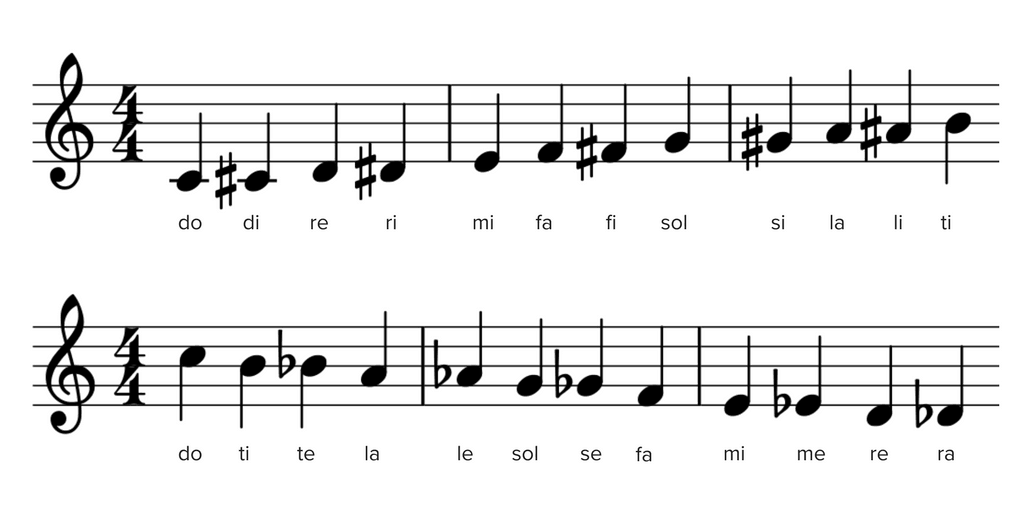Chromaticism
Solfège focuses our attention on the primary notes of a key (“diatonicism” or “diatonic notes”), but most music uses at least some notes outside of the key (“chromaticism” or “chromatic notes”). Those notes are typically understood to relate to the notes within the key: this is why, in notation, they’re represented with the same notes, simply altered with a sharp, natural, or flat.
Of course, there’s also music where notes altered with a sharp or flat seem just as “structurally” important as the other notes. Where this is the case, the music may not be based on a major or minor key or mode, and solfège may no longer be very useful. For that reason, we’re not talking about that music here.
People address chromaticism through solfège in different ways, but most often they preserve the idea that chromatic notes relate to diatonic notes. Here is one way that solfège can be used to represent chromatic notes:

When using scale degrees numbers, you may wish to indicate sharps with a beginning “sh” (e.g., “sharp four” becomes “shore”) and flats with a beginning “fl” (“flat sev” becomes “flev”). We associate this system with pedagogue Tim Best. Other people do not use any syllable modification, simply using the numbers even for altered notes.
Anytime that chromaticism is making things more complicated, remember the importance of the relationship between diatonic and chromatic notes. The more we can make this connection—emphasize the “place” of chromaticism within our “map”—the more logical and the less disorienting chromaticism will be.
We’ll do some activities here to start to build these connections, and we’ll follow up with more in the sections on transcription, dictation, sight reading, and improvisation skills.
Activity: Sequentials
Goal: Get used to using chromatic solfège and common ways that chromatic notes relate to diatonic notes.
Instructions: In the section on solfège, we introduced an activity called “sequentials” where you repeat a pitch pattern on every scale degree going up, and then the same pattern upside-down on every scale degree going down. Practice the sequential patterns below to develop your ability to use chromaticism.
- Chromatic passing tones: do-di-re (alter the pattern on mi and ti to mi-mi-fa and ti-ti-do)
- Chromatic neighbor tones: do-ti-do, re-di-re, mi-ri-mi, etc.
Activity: Identify how chromatic and diatonic notes relate
Goal: Get used to relating chromatic notes to a diatonic framework to improve tuning, key stability, and musicality.
Before you start: Locate some music that includes occasional chromatic notes. Sight-reading anthologies can be helpful because there are often chapters on chromaticism. If you practice with chapters on specific types of chromatic tones (“chromatic neighbor tones,” for example), you may wish to also find a later chapter that mixes different types.
Instructions:
- Scan the music for chromatic tones. For each chromatic tone, identify its function as a chromatic neighbor, chromatic passing tone, or other.
- Establish the key if necessary.
- Sing through the music, ignoring the chromatic tones. (You may either lengthen the note preceding each chromatic note or simply ignore the accidentals on the chromatic notes and sing them as diatonic.) Repeat as necessary to establish a clear diatonic framework.
- Once you’ve established this diatonic framework, re-introduce the chromatic notes and sing again.
Image Attributions |
|

